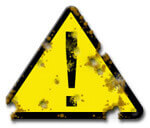Suggestions for Safely Using Neodymium Magnets.
The strength of neodymium magnets is greater than other types of magnets
Neodymium magnets are incredibly strong magnets that can be dangerous in specific circumstances. It is important to remember that neodymium magnets are very strong and can attract other metal objects, which can lead to injury or destruction to the body.
If you need to work with neodymium magnets, it is important to exercise caution and follow appropriate safety measures, such as wearing appropriate protective equipment (e.g., safety goggles), avoiding working with magnets near computers or other electronic devices, and keeping magnets apart from each other to prevent them from attracting and potentially causing harm or projectiles to be ejected in case of collision, which can endanger your vision.
Neodymium magnets are also very hard and brittle, so it is advisable to avoid strikes, throwing, or dropping magnets as they can quickly crack or split.
In conclusion, neodymium magnets are powerful tools that can be hazardous if not used with due caution, so it is important to observe security precautions when working with them.

When working with magnets, you should wear safety glasses or work gloves (if necessary).
To separate magnets, you need to grasp the top magnet and slide it out of the stack, then pull it apart swiftly.
Seek medical assistance in case of significant swelling.
Magnets retain their magnetic properties for decades when properly handled and stored at room temperature.
When holding magnets in your hands, you should remember to keep your hands at a proper distance from each other.
Work on a metal table or on a surface such that the magnets stay there, where you place them and not "fly" together to others.
Children should NEVER be allowed to play with neodymium magnets.
Keep magnets at least 20 cm away from vulnerable electronic devices or storage media.
You should not drill or heat neodymium magnets.
Immediately apply ice to any pinched skin to reduce pain. In the case of contact with larger magnets, significant injuries can occur.
Caution with Neodymium Magnets
Make sure not to bring neodymium magnets close to the TV, wallet, and computer HDD.
Strong magnetic fields emitted by neodymium magnets can destroy magnetic storage media such as floppy disks, credit cards, magnetic ID cards, cassette tapes, video tapes, or other devices. In addition, they can damage televisions, VCRs, computer monitors, and CRT displays. Avoid placing neodymium magnets in close proximity to electronic devices.
If you have a nickel allergy, avoid contact with neodymium magnets.
Studies clearly indicate a small percentage of people who suffer from metal allergies such as nickel. An allergic reaction often manifests as skin redness and rash. If you have a nickel allergy, try wearing gloves or avoid direct contact with nickel-plated neodymium magnets.
Neodymium magnets are extremely fragile, they easily break as well as can become damaged.
Neodymium magnets are characterized by significant fragility. Neodymium magnets are made of metal and coated with a shiny nickel surface, but they are not as hard as steel. In the event of a collision between two magnets, there may be a scattering of fragments in different directions. Protecting your eyes is crucial in such a situation.
Neodymium magnets should not be near people with pacemakers.
Neodymium magnets produce strong magnetic fields that can interfere with the operation of a heart pacemaker. However, if the magnetic field does not affect the device, it can damage its components or deactivate the device when it is in a magnetic field.
Neodymium magnets can attract to each other, pinch the skin, and cause significant injuries.
Neodymium magnets will bounce and contact together within a distance of several to around 10 cm from each other.
It is essential to keep neodymium magnets out of reach from children.
Neodymium magnets are not toys. You cannot allow them to become toys for children. Small magnets pose a serious choking hazard or can attract to each other in the intestines. In such cases, the only solution is to undergo surgery to remove the magnets, and otherwise, it can even lead to death.
Neodymium magnets can demagnetize at high temperatures.
Whilst Neodymium magnets can lose their magnetic properties at high temperatures, it's important to note that the extent of this effect can vary based on factors such as the magnet's material, shape, and intended application.
Keep neodymium magnets as far away as possible from GPS and smartphones.
Magnetic fields interfere with compasses and magnetometers used in navigation for air and sea transport, as well as internal compasses of smartphones and GPS devices.
Neodymium magnets are over 10 times stronger than ferrite magnets (the ones in speakers), and their strength can surprise you.
Please review the information on how to handle neodymium magnets and avoid significant harm to your body, as well as prevent unintentional disruption to the magnets.
Dust and powder from neodymium magnets are highly flammable.
Do not attempt to drill into neodymium magnets. Mechanical processing is also not recommended. If the magnet is crushed into fine powder or dust, it becomes highly flammable.
Safety rules!
Please see the article - What danger lies in neodymium magnets? You will learn how to handle them properly.

